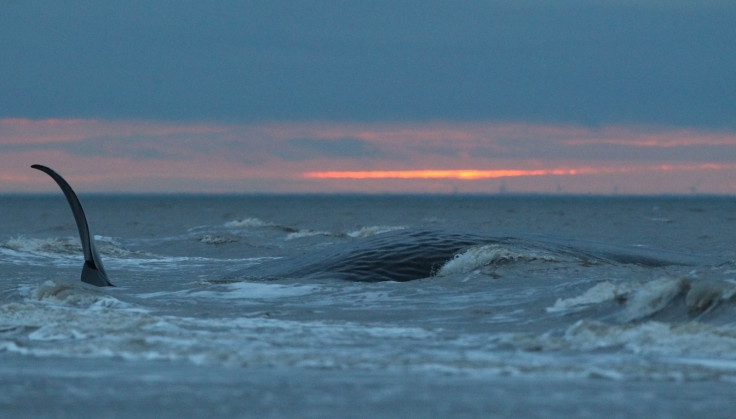Mysterious double whirlpools that can suck up sea creatures found in ocean for the first time ever
The bizarre giant whirlpool pairs, called modons, were captured by satellites.

Massive whirlpools in the ocean spanning hundreds of kilometres, called eddies are common, but now, for the first time ever, scientists have observed these massive whirlpools pairing up and swirling in opposite directions. This mysterious phenomenon has until now, only been hypothesised but has never been found in the wild.
The bizarre giant whirlpool pairs, called modons, were captured by satellites. These pairs are believed to rotate 10 times faster than their single counterparts and can also suck up sea creatures, transporting them across great distances. Satellite images captured the "smoke rings" or modons, swirling away in the Tasman Sea, off the southwest of Australia and in the South Atlantic, west of South Africa.
Now that this bizarre phenomenon has actually been observed, scientists are attempting to uncover what causes these maelstroms and why they behave so weirdly.
"Ocean eddies almost always head to the west, but by pairing up they can move to the east and travel ten times as fast as a normal eddy, so they carry water in unusual directions across the ocean," said Chris Hughes, an oceanographer at University of Liverpool and one of the researchers behind the new discovery. "What we found was a pair of eddies spinning in opposite directions and linked to each other so that they travel together all the way across the Tasman Sea, taking six months to do it."
A more in-depth analysis revealed that these modons are actually not as rare as previously thought. Scientists behind the new discovery scanned satellite data from as far back as 1993, only to find evidence of nine separate modons. While eight of these were found around Australia, one modon was spotted forming southwest of South Africa, in the Atlantic Ocean.
"I happened to notice one little feature down in the Tasman Sea [between Australia and New Zealand] that was behaving very strangely compared to everywhere else," Hughes told Popular Science. "Almost all these eddies drift slowly westwards, but this little feature was going quickly eastwards. It turned out to be this half smoke ring."
While the causes of the phenomenon are still unknown, researchers suggested that eddies could end up pairing together when they crash into each other in the ocean, or when eddies collide against the coastline. Scientists observed that when the swirling whirlpools merge, a U-shaped vortex is formed underwater, which connects the two eddies and can hold together for up to six months.
According to Hughes, this bizarre phenomenon could also transport organisms across massive distances. "The smoke rings require an area of calm water to 'puff' out through, which itself is quite unusual," Hughes said. "I've looked at other areas of other oceans but I've only seen them in the oceans around Australia, plus one in the South Atlantic. My thinking is that these linked, fast moving eddies could 'suck-up' small marine creatures and carry them at high speed and for long distances across the ocean."
The findings of the new discovery have been published in the journal Geophysical Research Letters.






















